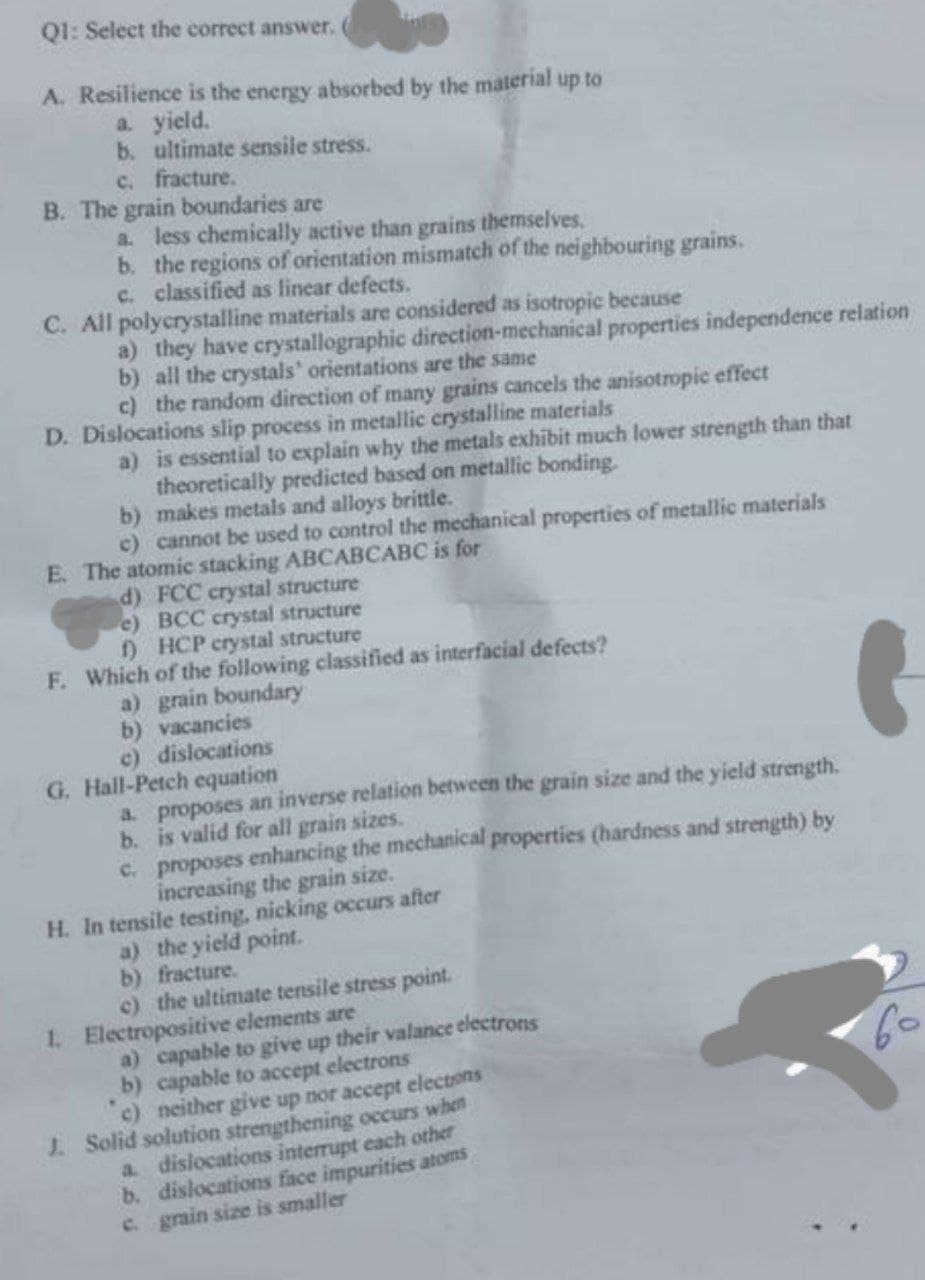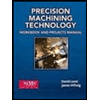Q1: Select the correct answer. ( A. Resilience is the energy absorbed by the material up to a. yield. b. ultimate sensile stress. c. fracture. B. The grain boundaries are a. less chemically active than grains themselves. b. the regions of orientation mismatch of the neighbouring grains. c. classified as linear defects. C. All polycrystalline materials are considered as isotropic because a) they have crystallographic direction-mechanical properties independence relation the same
Q1: Select the correct answer. ( A. Resilience is the energy absorbed by the material up to a. yield. b. ultimate sensile stress. c. fracture. B. The grain boundaries are a. less chemically active than grains themselves. b. the regions of orientation mismatch of the neighbouring grains. c. classified as linear defects. C. All polycrystalline materials are considered as isotropic because a) they have crystallographic direction-mechanical properties independence relation the same
Precision Machining Technology (MindTap Course List)
2nd Edition
ISBN:9781285444543
Author:Peter J. Hoffman, Eric S. Hopewell, Brian Janes
Publisher:Peter J. Hoffman, Eric S. Hopewell, Brian Janes
Chapter8: Computer Numerical Control
Section8.4: Cnc Turning: Setup And Operation
Problem 2RQ: MDI stands for _________ ___________ ________.
Related questions
Question

Transcribed Image Text:Q1: Select the correct answer.
up to
A. Resilience is the energy absorbed by the material
a. yield.
b. ultimate sensile stress.
c. fracture.
B. The grain boundaries are
a. less chemically active than grains themselves.
b. the regions of orientation mismatch of the neighbouring grains.
c. classified as linear defects.
C. All polycrystalline materials are considered as isotropic because
a) they have crystallographic direction-mechanical properties independence relation
b) all the crystals' orientations are the same
c) the random direction of many grains cancels the anisotropic effect
D. Dislocations slip process in metallic crystalline materials
a) is essential to explain why the metals exhibit much lower strength than that
theoretically predicted based on metallic bonding.
b) makes metals and alloys brittle.
c) cannot be used to control the mechanical properties of metallic materials
E. The atomic stacking ABCABCABC is for
d) FCC crystal structure
e) BCC crystal structure
f) HCP crystal structure
F. Which of the following classified as interfacial defects?
a) grain boundary
b) vacancies
c) dislocations
G. Hall-Petch equation
a. proposes an inverse relation between the grain size and the yield strength.
b. is valid for all grain sizes.
c. proposes enhancing the mechanical properties (hardness and strength) by
increasing the grain size.
H. In tensile testing, nicking occurs after
a) the yield point.
b) fracture.
c) the ultimate tensile stress point.
1. Electropositive elements are
a) capable to give up their valance electrons
b) capable to accept electrons
c) neither give up nor accept electrons
J. Solid solution strengthening occurs when
a. dislocations interrupt each other
b. dislocations face impurities atoms
c. grain size is smaller
(
Expert Solution
This question has been solved!
Explore an expertly crafted, step-by-step solution for a thorough understanding of key concepts.
Step by step
Solved in 3 steps with 2 images

Knowledge Booster
Learn more about
Need a deep-dive on the concept behind this application? Look no further. Learn more about this topic, mechanical-engineering and related others by exploring similar questions and additional content below.Recommended textbooks for you

Precision Machining Technology (MindTap Course Li…
Mechanical Engineering
ISBN:
9781285444543
Author:
Peter J. Hoffman, Eric S. Hopewell, Brian Janes
Publisher:
Cengage Learning

Precision Machining Technology (MindTap Course Li…
Mechanical Engineering
ISBN:
9781285444543
Author:
Peter J. Hoffman, Eric S. Hopewell, Brian Janes
Publisher:
Cengage Learning